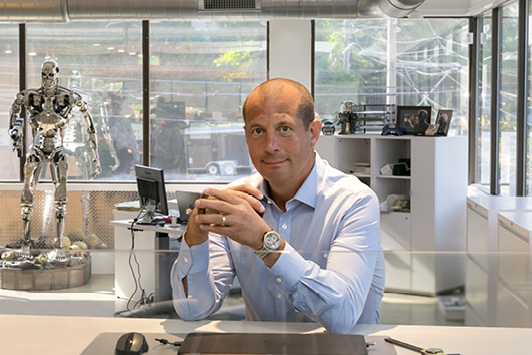
The US luxury market is showing signs of heating up, particularly in the jewelry category.
Recent figures from Bain & Co. reveal that despite struggling, the Americas — both North and South — managed to finish 2017 in positive luxury territory, growing by 2% during the year. In the US, the story looks even better: In 2017, jewelry retail sales grew 5.2% year on year, faster than overall retail spending (4.2%), according to the US Census Bureau’s Monthly Retail Trade Survey.
Meanwhile, Swiss luxury watch exports to the US fell 1.9% in January, following a 4.4% decline in the whole of 2017, the Federation of the Swiss Watch Industry (FH) recently reported. However, with low unemployment and a growing economy, there are reasons to be optimistic about a turnaround.
Favorable conditions
Pam Danziger, founder of luxury research and consulting firm Unity Marketing, says there are signs of a more bullish economic environment. However, she cautions that the retail conditions have changed dramatically during the past decade, and retailers need to be aware of this.
“While the economy is favorable, I think there are just some real issues in regard to the mind-set of consumers when it comes to buying jewelry and watches,” she says. “Ultimately, jewelry has inherent value, unlike some other categories in the luxury market. However, I would be a little bit cautious in thinking the luxury jewelry market is out of the woods yet. There’s so much good costume jewelry and bridge jewelry available where you can get a good look for less. It really poses an issue for many brands today.”
The power of youth
Younger shoppers are influencing the global market, but it’s not just millennials, according to the Bain report, which examined the worldwide market for luxury goods during the fall-winter season. Consumers born as late as the 2000s are impacting both product development and distribution.
“The main growth engine of the luxury market is a generational shift, with 85% of luxury growth in 2017 fueled by Generations Y and Z. But a broader ‘millennial state of mind’ is permeating the luxury industry and changing the ways in which all generations make purchases,” the report states. “This shift also pushes luxury brands to redefine what they deliver to customers, and how they deliver it.”
Online rules
Of course, much of that change is being driven by digital and social media, and e-commerce in particular. The Americas market makes up close to half of global online luxury sales, which totaled EUR 23 billion ($28 billion) in 2017, according to Bain. The largest categories globally are accessories and apparel, with beauty and hard luxuries on the rise.
“Brands are finally starting to be proactive about making their mark in this channel by establishing their own websites, which now account for 31% of sales,” the report says. “But specialized luxury e-tailers still earn the lion’s share of online sales.”
The bulk of that online success is going to the companies with the strongest brand recognition and the most funding, says business intelligence and research firm L2 Inc., which benchmarks the digital performance of consumer brands. Its latest report rated the “digital IQ” of 70 international luxury jewelry and watch companies during 2017, and the top two performers were Tiffany & Co. and Cartier. Both earned “Genius” status for their digital competence.
Brands that are part of a large portfolio also have an advantage, the report found — for instance, those owned by Swiss luxury conglomerate Richemont, which is attempting to take full control of fashion e-tailer Yoox Net-A-Porter Group.
“We’re seeing the brands with the biggest budgets winning in digital,” says L2 associate director Reid Sherard. “Smaller independent brands, which should be more nimble and able to adjust to a rapidly changing digital landscape, are largely failing to innovate and falling further behind.”
The two biggest opportunities for brands are to reach younger consumers through social media, and to invest in new distribution channels, he adds.
“Pomellato and Tudor, among others, have chosen new brand ambassadors who can advocate for their brands to millennial audiences on social media. When it comes to actually sellingproduct, longstanding digital holdouts like Vacheron Constantin and Buccellati are becoming part of the vanguard by investing in digitally native growth channels Hodinkee [a watch editorial website with e-commerce capabilities] and Net-a-Porter over department stores or existing independent retailers.”
Breaking down barriers
On the retail level, Danziger stresses the importance of creating a good experience for customers. As an example, she cites Michigan luxury jeweler Tappers, which recently opened a store with a taproom featuring a rotating selection of local beers.
For brands and manufacturers, Danziger continues, it’s vital to get as close to the retailer and customer as possible in order to understand the challenges store owners face. “There are so many barriers — designing jewelry, managing the brands, marketing — before you get to the doors of the retailers where the customer comes in. I think breaking down those barriers would allow brands and manufactures to better adapt to the marketplace.”
Image: Danny GovbergArticle from the Rapaport Magazine - March 2018. To subscribe click here.